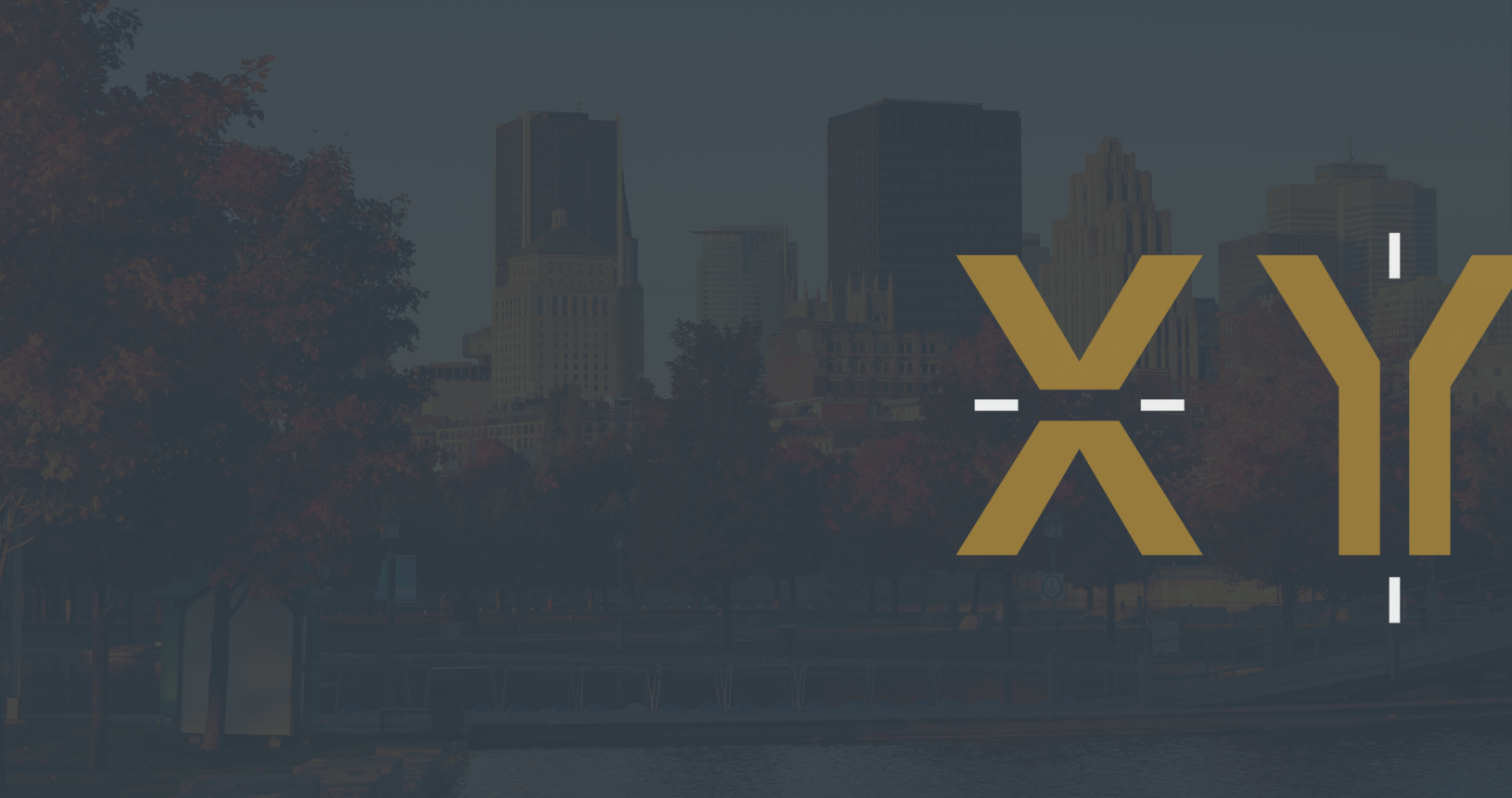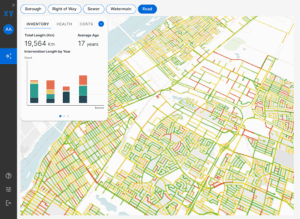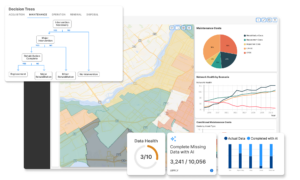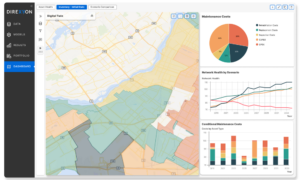
Looking back over 21 years of financial modeling, decision analytics & strategic planning
2022 marks a milestone in DIREXYON’s history, our 21st birthday. To celebrate, we sat with Pierre Vigneault, one of the co-founders, to reflect on the last two decades. We discussed how the company started, the value we bring to customers, and he shared a little advice to anyone currently in strategic planning mode!
Note: This interview has been translated and edited for clarity and readability
Let’s go back to the beginning, what led you and the other founders to start DIREXYON?
At the beginning, Éric Joubert, Gabriel Veilleux and I wanted to start a company that did financial modeling. The three of us have one thing in common, we love finance. We all have a background in finance, we’re all either CPAs or CFAs, I’m a CPA. Plus, the three of us are computer programmers. So, the common features are numbers.
In my case, it’s obvious. Why? Because I’m dyslexic. So, anything to do with reading and writing, that’s not for me. However, it made me think differently. Both academically and in the market, I understand the need or the problem. And when I’m presented with a solution, I understand it. But everything in between? I couldn’t follow the standard process like we’re asked to.
On the other hand, it makes me good at reverse engineering problems. It brings a different way of thinking. Doing reverse engineering brought a certain philosophy inside DIREXYON. In fact, it allowed us to develop approaches that most other people would never have thought of.
What problem did you initially set out to solve?
So, for the first five years we were in service mode. We worked with decision-makers to make financial models, simulations, that allowed them to evaluate their hypotheses. Including factors that they have no control over, like inflation, the price of gas, etc. We wanted to shed light on the hypotheses that are volatile, as well as the hypotheses that are a little more precise.
The sum of all these hypotheses in a model can give a decision-maker an expected return. Then the decision maker has a certain decisional clarity around what he’s opening himself up to when giving the go/no go on a project. That’s how we started.
Afterwards, by working closely with clients, we discovered more opportunities in the market. One client, who had a particularly large network, said:
“Pierre a new project, that’s all good. You did a great analysis, but that’s not my main concern. My main concern is how to maintain all the projects that I’ve inherited, that have been accumulating over the past 100 years.
This inherited infrastructure has aged. Obviously, we add new assets, but I must also maintain the future of what I have and will build.
How can we extend lifespans, if I have to rebuild everything… what do I do with all the inherited infrastructure? I’ll go bankrupt, it’s impossible. So what options are in front of me?”
This is where DIREXYON saw the opportunity. We said to ourselves, can we help a decision-maker who has all these experts on hand that are worth a fortune, and take their global knowledge base, their employees’ expertise, and digitize it? Test different intervention options to maintain their network? Repair it? Replace it? Extend their lifespans? And we’ve managed to do that successfully.
Exactly how does DIREXYON help decision-makers and bring value to a company?
Let’s take a city the size of Montreal. There is a lot of infrastructure; watermains, sewers, pavements. In the portfolio of assets, there are some that are newer and some that are older, at the end of their useful life.
So, a decision-maker who has a limited number of resources, materials, and people; what actions can they take that would be the most physically and financially profitable for the company? Answering this question isn’t trivial. There are millions of possibilities, billions of possibilities.
Our role is to help the decision-maker to take all these elements and to do simulations. As an example, we’re going to take a segment of pavement from one stop sign to another. It’s recommended that the pavement needs changing. That’s OK but ask yourself about the peripheral infrastructure that coexists around the pavement, underneath the pavement, for example, watermains and sewers. Some may be reaching the end of their useful life.
If in five years, seven years, eight years, we’ve got to replace them, we’ll be making a trench in a roadway that is almost new, that would theoretically be good for another 25 years. But with a trench in an almost new pavement, the lifespan has just been shortened by a lot, maybe half.
On the other hand, if instead of redoing the pavement knowing that we have to intervene in a peripheral network, we postpone this decision. Instead, we do maintenance, we repair it, we resurface it, and after five years, because we have extended its lifespan, we synchronize the projects for a full reconstruction. We just saved a lot of money.
Decision-makers would like to know with clarity what they are exposing themselves to when giving the go to each project. The best way to do this is to offer lots of options and show the impacts on its life cycle, 20 years, 30 years, 40 years, 50 years.
Why do we have to look at the long term? Because a decision can be brilliant in the short term, but not in the long term.
But our objective here is to help decision makers with multitudes of decisions, across their entire portfolio, to make the optimal decisions. We’re not looking to optimize the realization of a project. We’re simply trying to tell the decision makers if it is a good or a bad project, respecting the level of service required, at the lowest possible cost.
DIREXYON’s modeling capabilities are powered by technology as well as human expertise. How does that work?
Machines are capable of massive calculations, but humans are intuitive. Humans have expertise, they have lived experience, they have goals. I’ve never seen a machine be intuitive.
However, can a human make billions of calculations on their own? No, it’s impossible. It would take too long to calculate by hand, it would take them 400 years. They’d be dead before that.
But because we’re in the era of cloud computing, we can put 100 processors in parallel, and do massive calculations in hours. Maybe even minutes if you’re willing to pay more, or you need the results quickly. So, let’s get the machines to do what humans don’t have the time to do, and let people do what machines don’t yet know how to do.
Obviously, the sum of the two generates a phenomenal wealth of knowledge. The digitization of human expertise, the rationalization of their intuition, with the capacity of cloud computing to make massive calculations allows decision-makers to visualize the impacts of a decision-making policy.
They can test different decision-making policy models that all meet a required level of service, given their own tolerance to risk. And from this, they will choose the one that is most valuable to their organization. If they’re not able to imagine their future, how do you expect a decision maker to be able to get there?
What’s your message for any team currently in the strategic planning process?
If you don’t plan for the future, if you don’t visualize the future, you’re never going to be able to get there.
The sentence I hate the most is: ‘If I had known that twelve years ago, this is what I would have done.’
I really hate that sentence. Today, you should look at the different options in front of you. You’ll see the one that suits you best based on your risk tolerance, the levels of services offered and the resulting costs, your indefinite financial and human capacities. And choose the direction, the orientation or the strategic path, that would be the best.
After that, in twelve years, you’ll be proud of yourself. You won’t be saying ‘If I had known, I would have done otherwise.’ Why? Because you are going to see and test different approaches.



